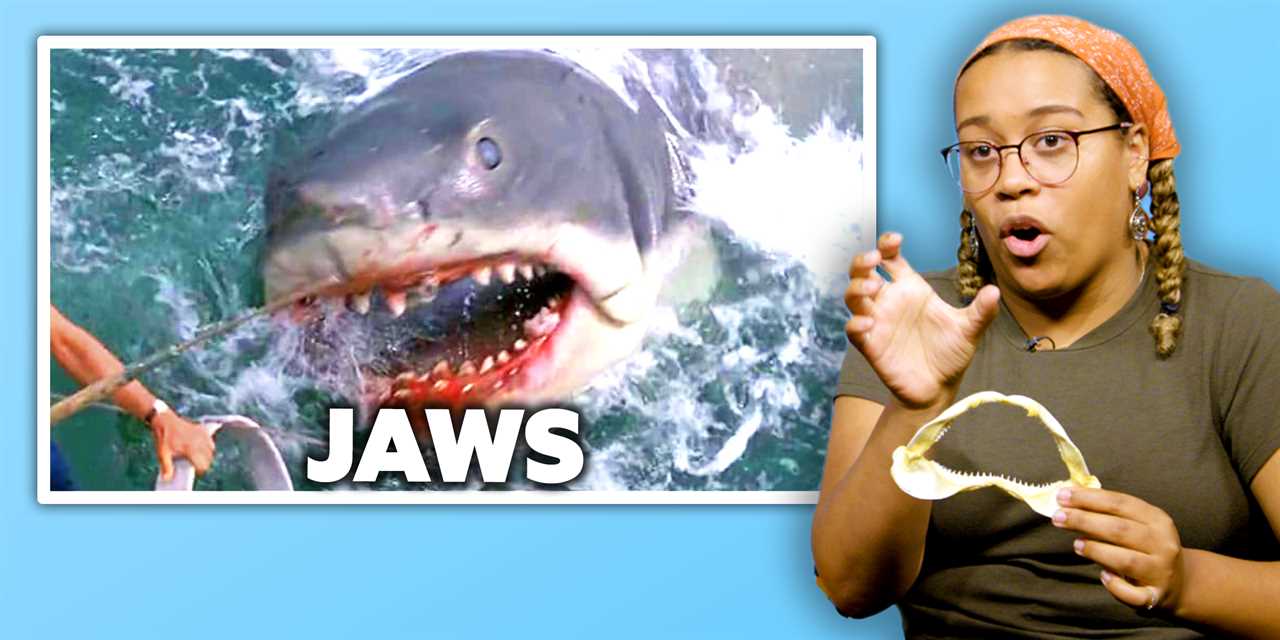
Universal Pictures Home Entertainment
- Movies have shaped the ways we think about sharks.
- But they often get even the basics wrong, from what they eat to how they act.
- Here are facts that "Jaws," "Finding Nemo," and "The Meg" got wrong — and one that's right.
Movies have a way of influencing the way we see the world. When it comes to sharks, they've drawn the portrait of blood-lusting vicious predators that'll go to any length to chomp at delicious humans.
But is that really true? Insider interviewed marine biologist and doctoral student Amani Webber-Schultz to assess shark facts that in the movies "Jaws" (1975), "Finding Nemo" (2003) and "The Meg" (2018).

Insider
Here are some inaccuracies she called out — plus one thing a movie got right.
Punching a shark on the nose won't help you much
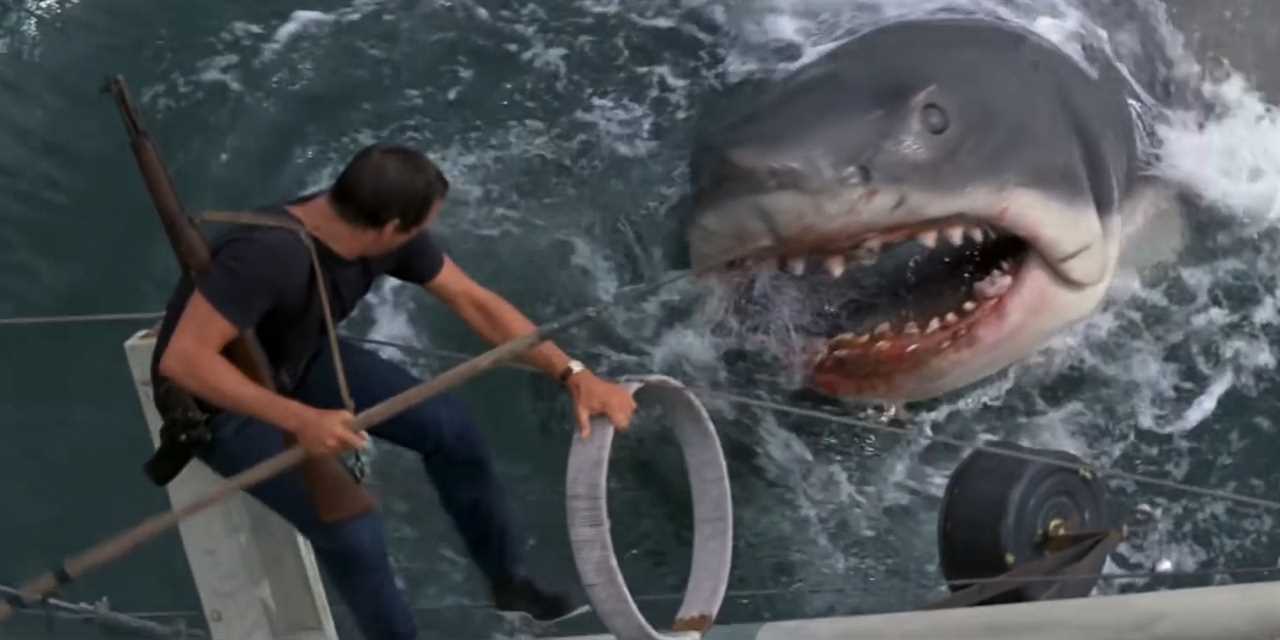
Universal Pictures Home Entertainment
"I don't even know who came up with the idea that you should hit a shark on the nose to get away from them," Webber-Schultz said.
Like anything that's attacking you, "you should probably be hitting them in whatever places you can to get them away from you," she said.
Webber-Shultz studies sharks at the New Jersey Institute of Technology. She's working on a Ph.D. looking at how water interacts with tiny scales on shark skin, called denticles.
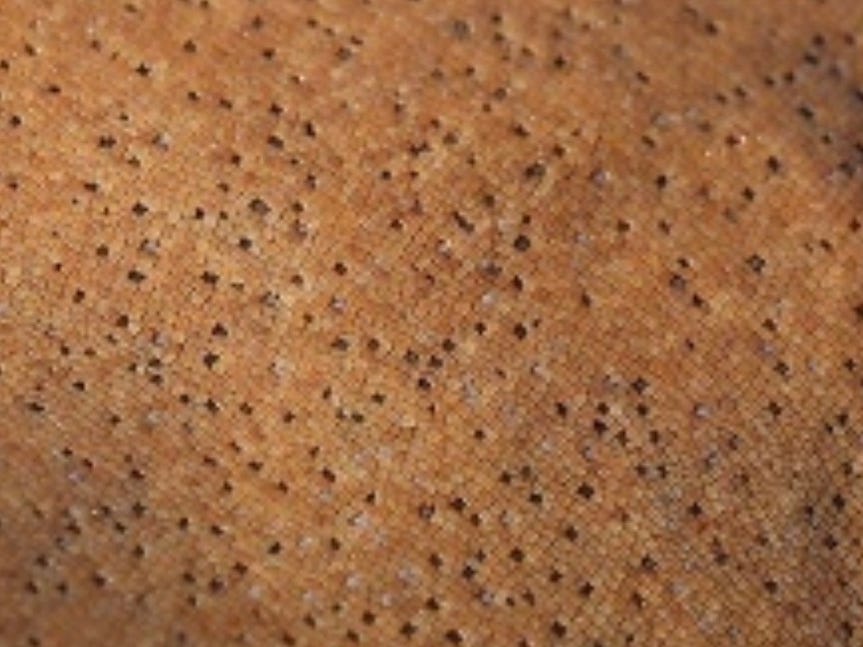
NOAA fisheries
It's those scales that make the shark nose the wrong target for a sucker punch.
The scales around the nose are extra resistant to protect the shark from cuts and bruises when they are "poking around trying to figure out what something is," said Webber-Schultz.
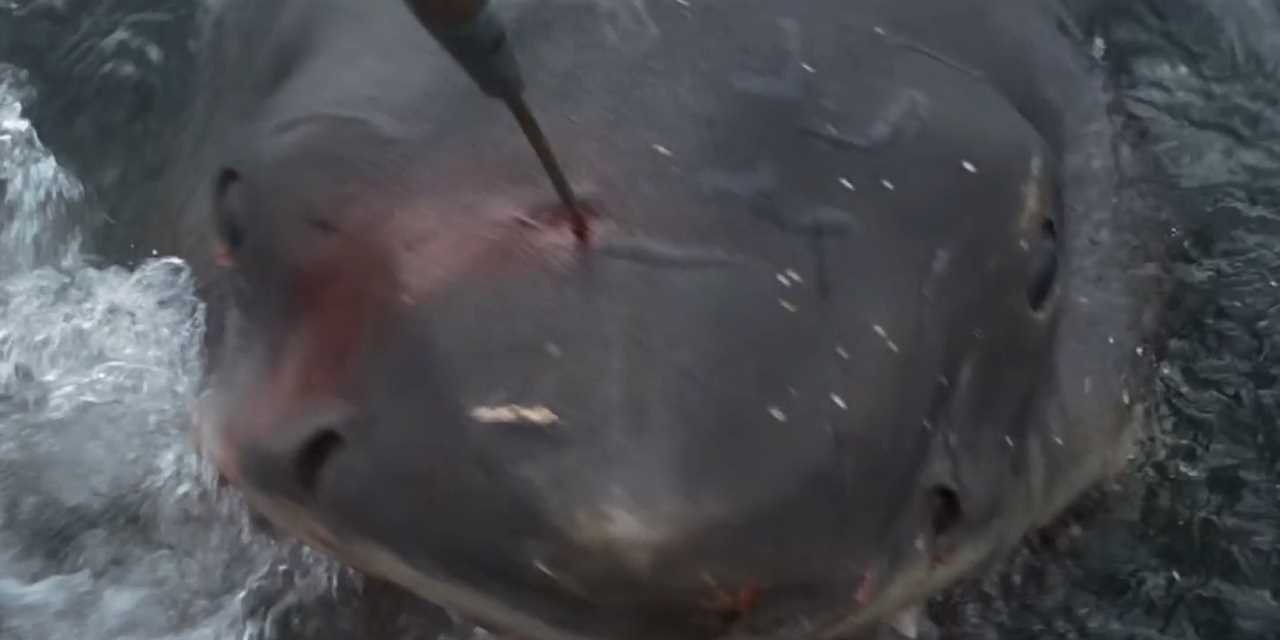
Universal Pictures Home Entertainment
So when Martin Brody, the protagonist in the 1975 classic "Jaws," is stabbing the nose of the animatronic monster, he may not be doing much good.
The soft underbelly is the best target
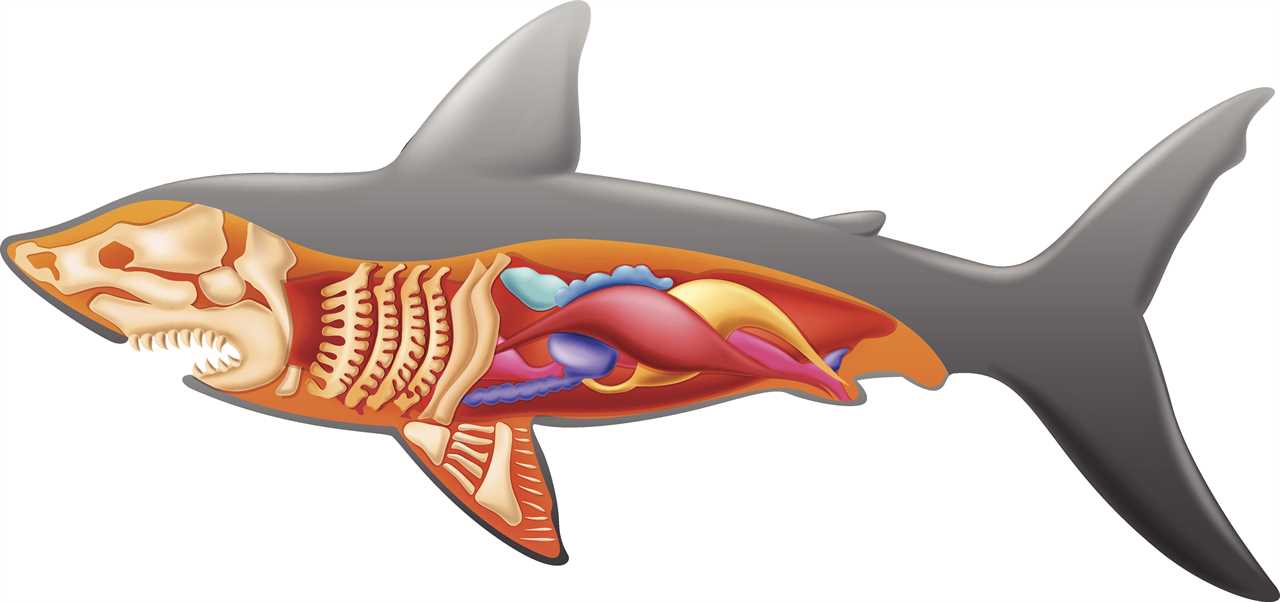
blueringmedia/Getty Images
One of the best places to strike might be the shark's underbelly.
"Structurally, the weakest spot on a shark, in terms of ability to actually give them injury and be somewhat catastrophic to them, is their stomach," Webber-Schultz said.
The stomach is not as sturdy as the upper part of their body, which has a very big layer of muscle and tissue, she said.
But stabbing this predator might not be enough. Sharks have been known to be able to swim with "holes in their body," as long as the skin can still keep essential organs inside, said Webber-Schultz.
"Because sharks are crazy," she said.
Great whites are much smaller than the shark in "Jaws"
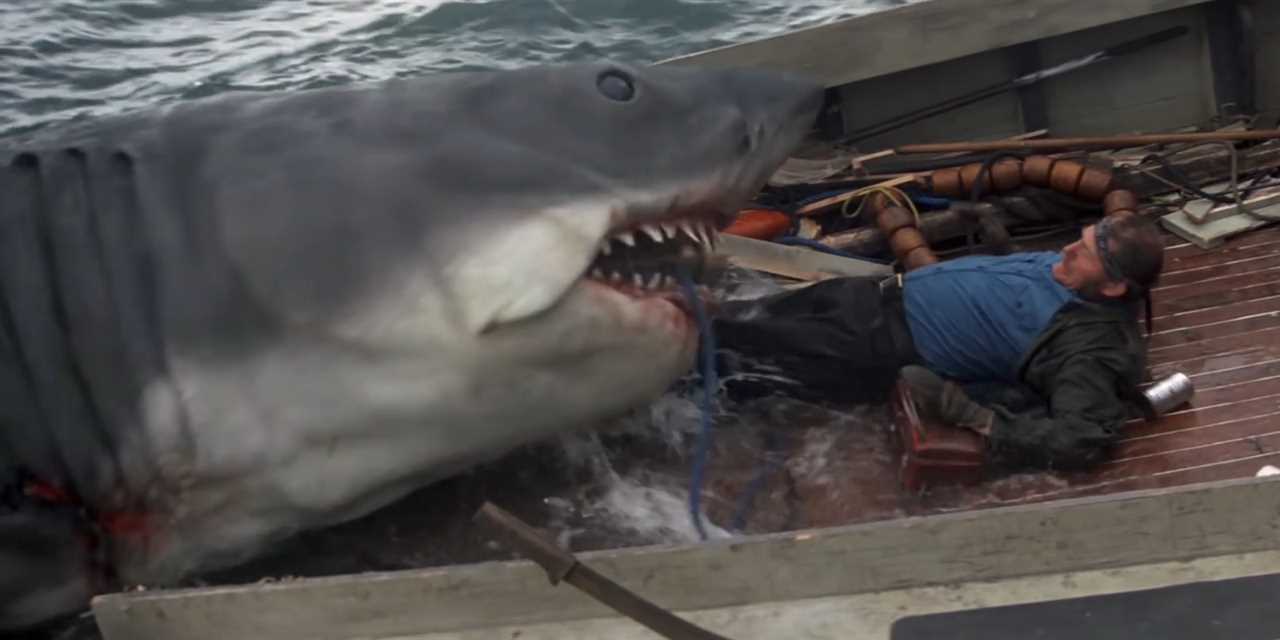
Universal Pictures Home Entertainment
Those designing the shark got one thing right: He has five gills on each side of his head.
"One of the biggest things that they got wrong is his size, though," per Webber-Schultz.
In the film, Brody estimates him to be around 25 feet. This is far larger than the largest great whites that we know about, she said.
Though females tend to be smaller than males, they tend to get around 16 feet maximum length.
"So Bruce is about 10 feet larger than the average great white shark that we know of," she said, using the affectionate name director Steven Spielberg gave to the shark.
Sharks aren't the ravenous monsters they are made to be in movies
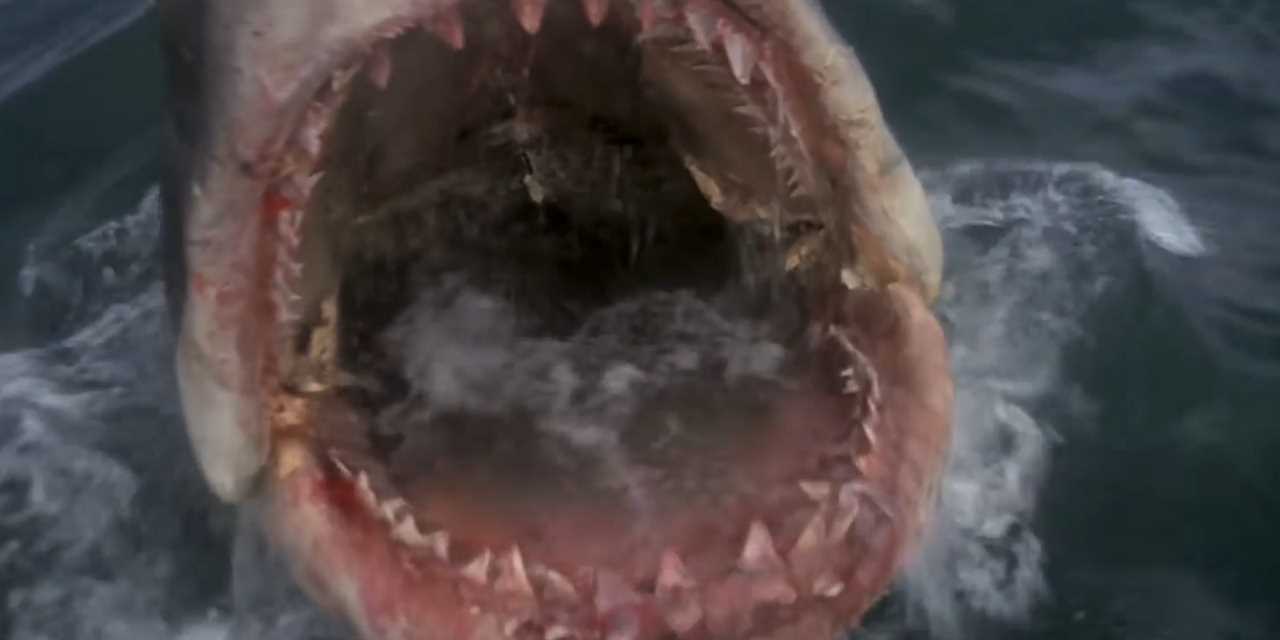
Universal Pictures Home Entertainment
Unlike in the movie where sharks are stalking character after character, lusting for human blood, sharks are actually pretty slow eaters.
Unlike humans, who have a fast metabolism and have to keep eating food to keep active, sharks have a slow metabolism and it takes them a lot longer to break down a meal, Webber-Schultz said.
"Once they get enough in a meal, they'll just swim around and let all of that digest," she said.
Bruce would likely have had its fill from eating the skinny-dipping Chrissie Watkins who is killed at the beginning of the movie.
Sharks don't go for humans
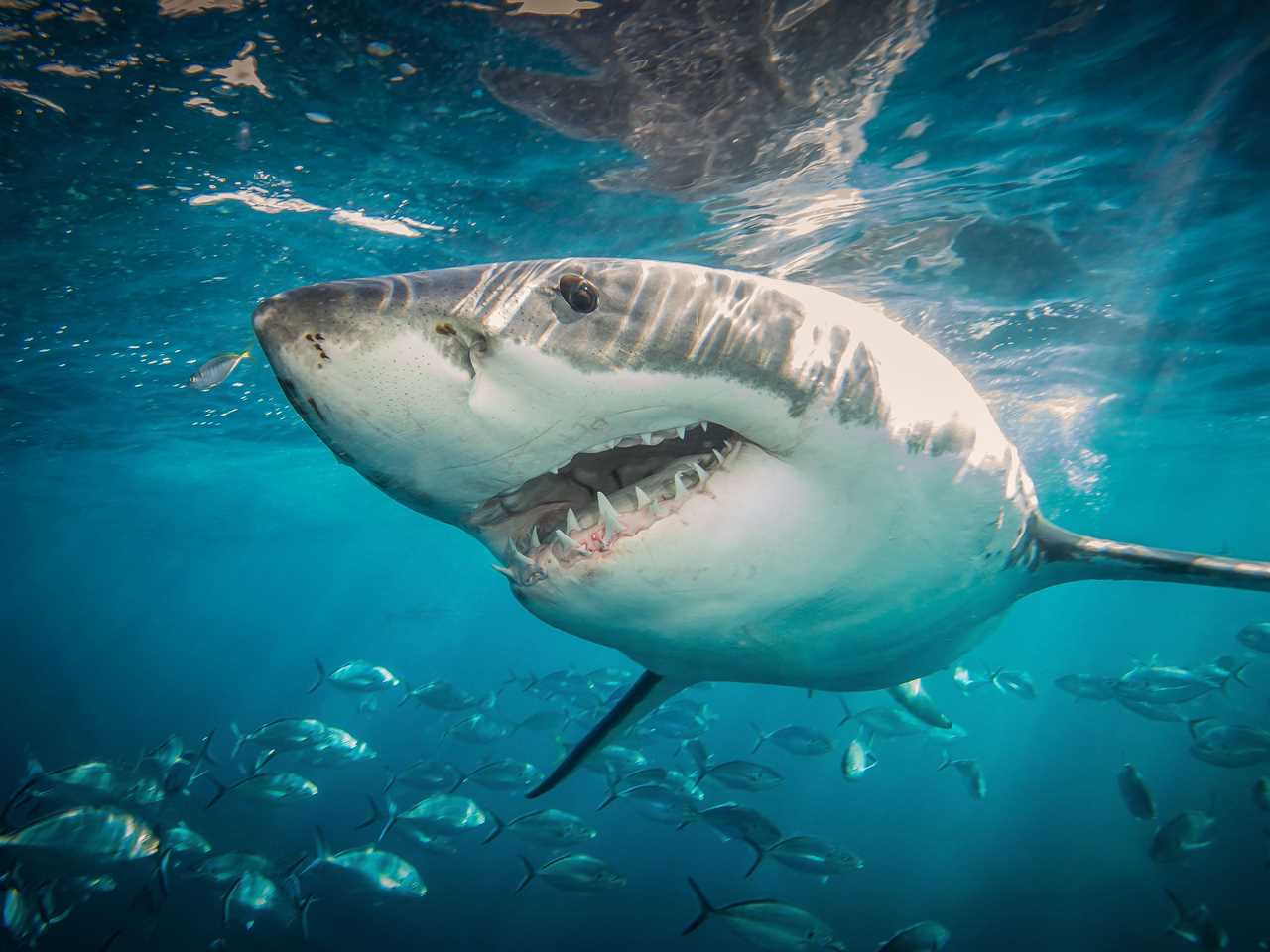
Barcroft Media/Getty Images
Or more likely, the shark would not have come back for seconds. Sharks usually go looking for their favorite meals, and humans aren't naturally on the menu.
"Often when they bite people, it's a curiosity bite, meaning they just want to know what we are," said Webber-Schultz.
But that would have made for a much less interesting movie.
"This movie was really influential in creating this public perception of sharks, that they are man-eaters, and then the subsequent terror that people felt after watching it," said Webber-Schultz.
"Now I think we're kind of bouncing back from this. You see a lot of people realizing how important they are to this planet," she said.
One they got right: Sharks can't smell a drop of blood a mile away
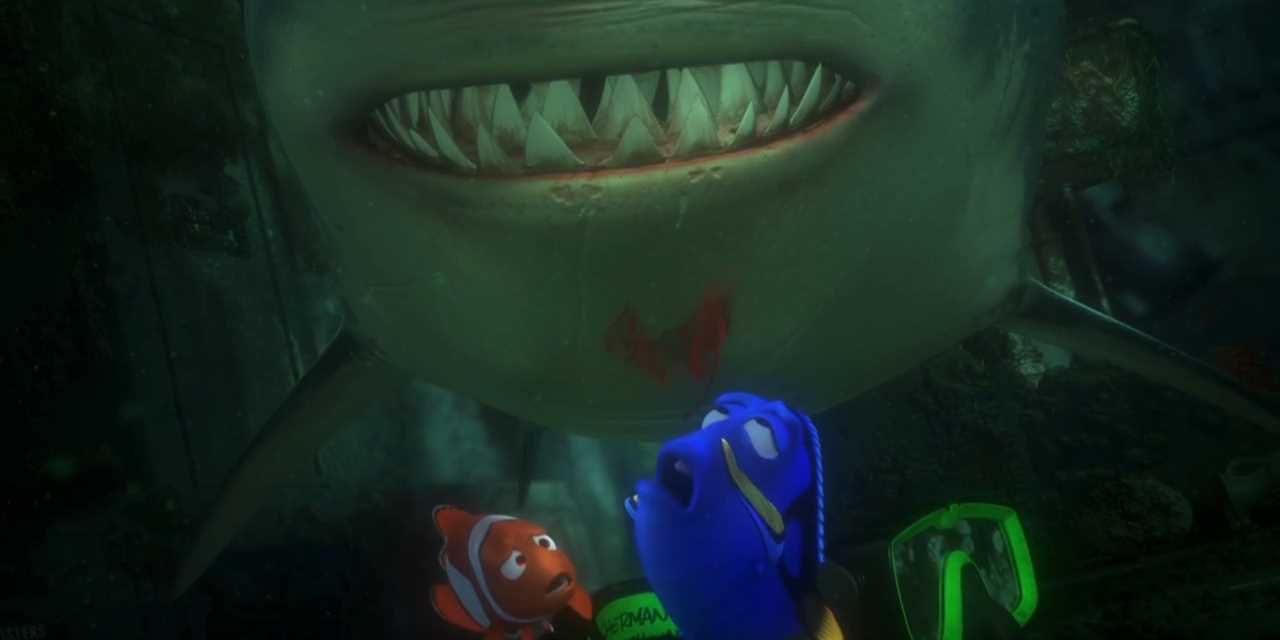
Disney+
Just like humans, sharks need smell particles to actually enter their noses to smell. That means that if the blood is miles away, they won't smell it.
It's a misconception that sharks work mostly on their sense of smell. Just like us "they have sight. They do have ears. They can hear," but they also rely on "their lateral-line system, which allows them to sense vibrations in the water," said Webber-Schultz.
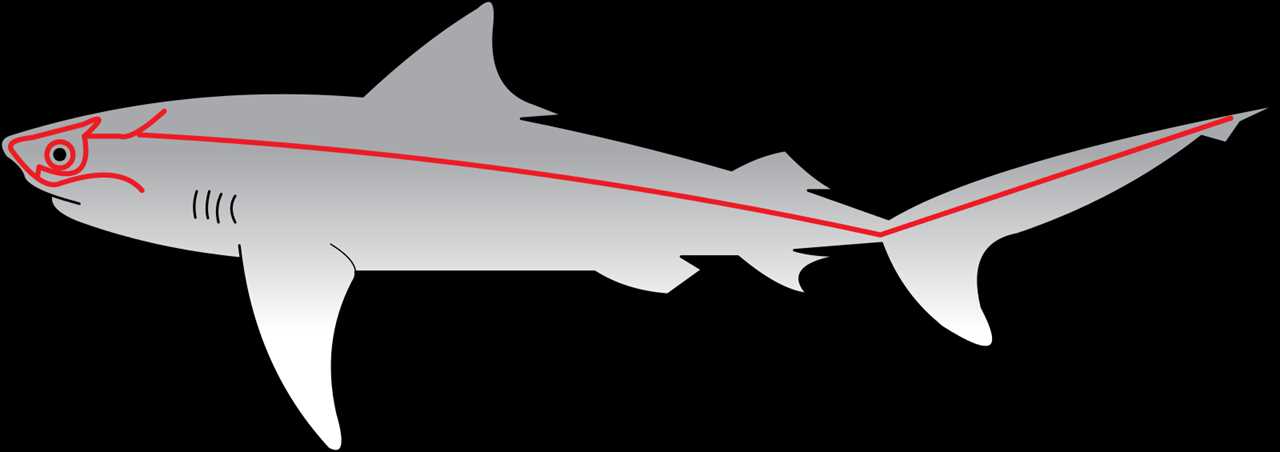
Chris huh
"So if they're within a certain amount of feet of, say, an injured fish, they can actually feel the vibrations from that fish flopping around and turn towards that and think, "Oh, that might be an injured thing that I can eat," she said.
So "Finding Nemo" hit the nail on the head when they showed blood actually going into the shark's nose, she said.
Sharks don't go into a frenzy, they're actually pretty selective hunters
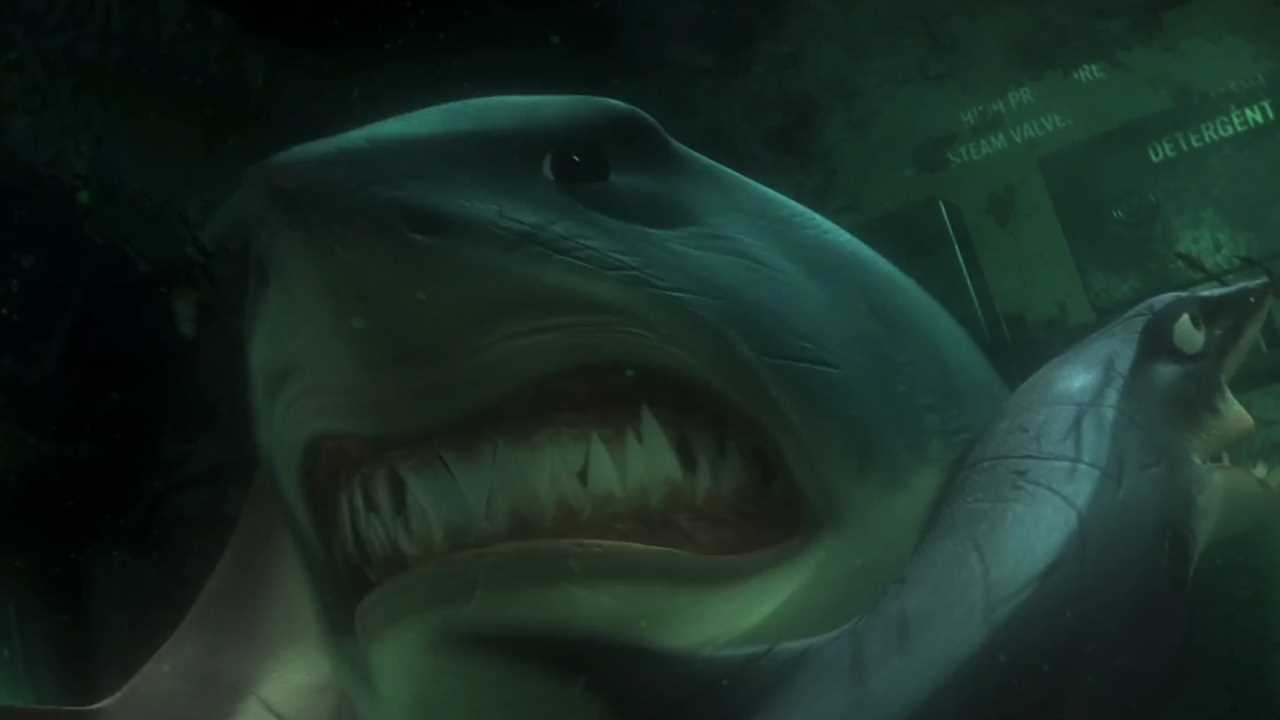
Disney+
Where "Finding Nemo" went wrong, is in what happened after the blood went in the nose of the shark, aptly named Bruce as well.
"Sharks do not go into a frenzy when they smell blood, but they do get curious, so often they will completely turn to where that scent of blood came from and swim towards it," Webber-Schultz said.
Because of their slow metabolism, sharks have to make decisions about whether the energy they will have to spend will be worth the payoff.
"In this example, a clown fish [like Nemo] and Dory would not actually be a sufficient meal for a great white shark like Bruce," who would prefer to go after a seal, she said.
A human would probably not make the cut either.
Some sharks are omnivorous, but not those in "Finding Nemo"
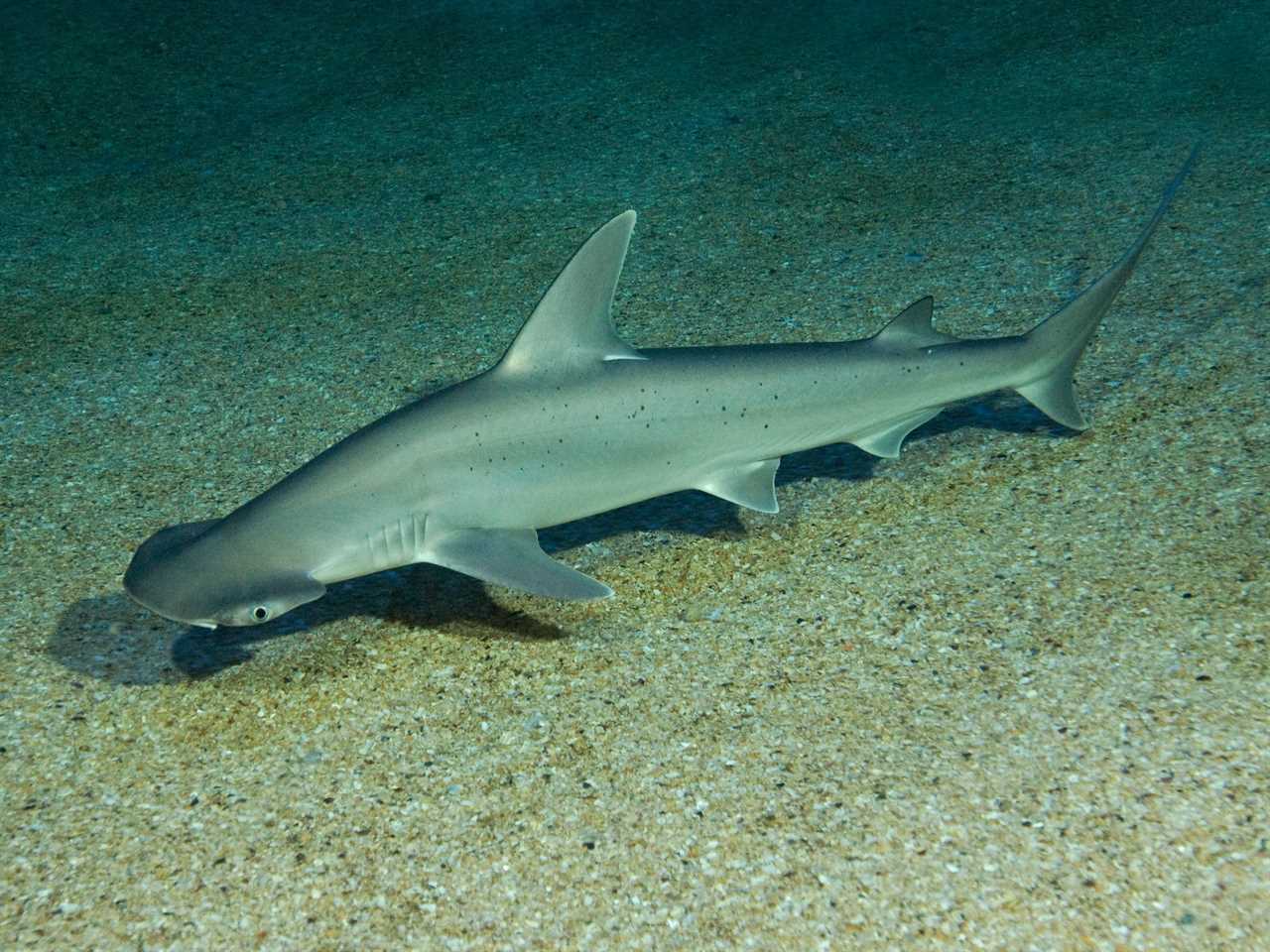
Gerard Soury/Getty Images
Sharks in "Finding Nemo" might want to fight their urges to eat fish, but it's not in their nature.
"Of the sharks in the scene, which are the great white shark, the shortfin mako, and the hammerhead, none of these sharks are omnivorous or vegetarian," she said.
"There are a couple of different types of omnivorous sharks. My favorite example is the bonnethead, which actually eats seagrass in addition to crabs," per Webber-Schultz.
Megalodons died out long ago
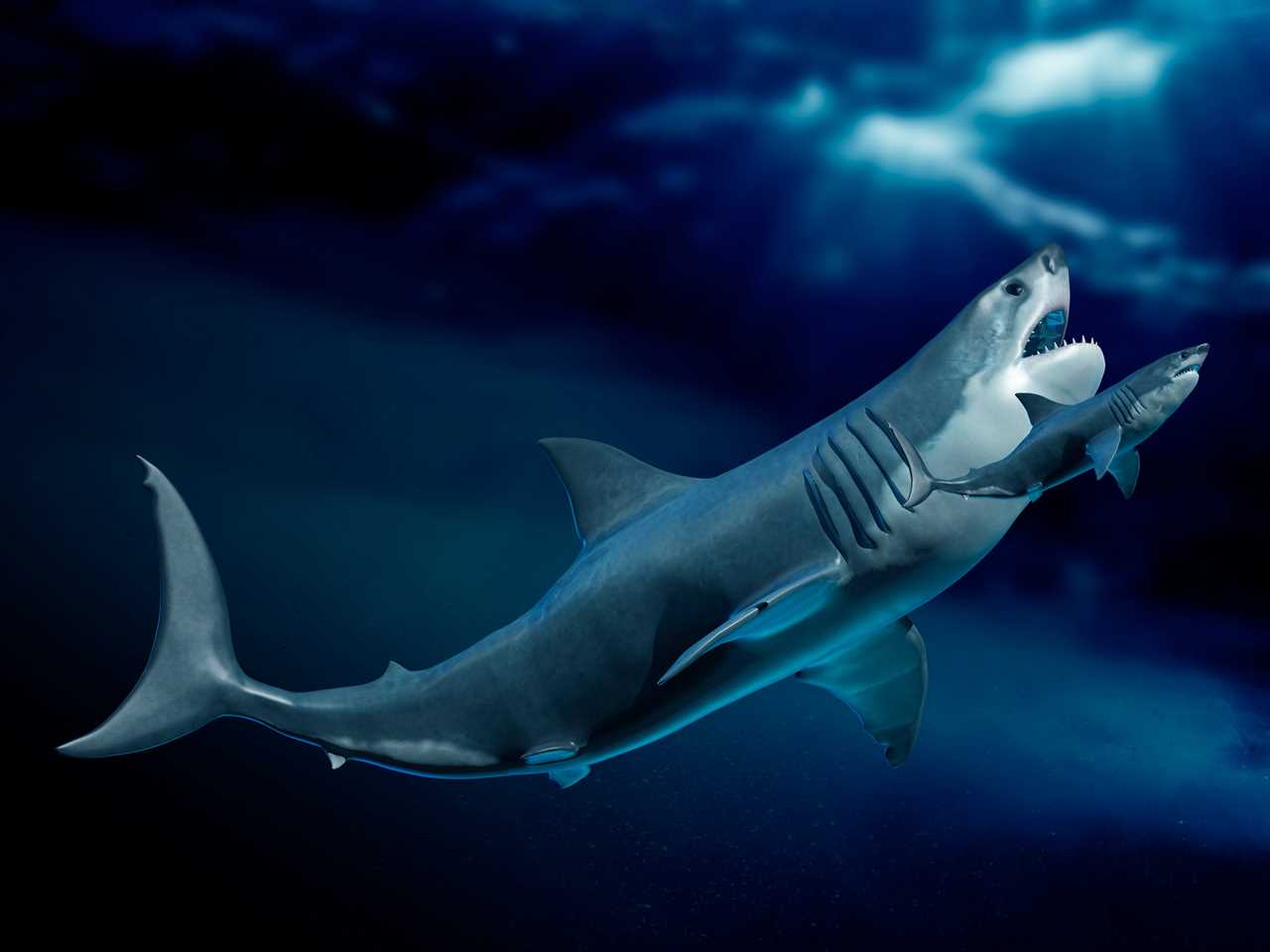
Victor Habbick Visions/Science Photo Library/Getty
In "The Meg," a 2018 movie staring Jason Statham, scientists discover a megalodon, a prehistoric giant shark, lurking in the depths of the Mariana trench.
The problem is that this shark has been extinct for a very long time, "despite this movie making you believe that they might maybe somewhere be real," said Webber-Schultz.
"They make the shark around 75 feet long, although newer research is showing that megalodons were probably closer to around 60 feet," she said.
It's difficult to estimate the exact length of a megalodon because we have to rely on rare bone fragments. Cartilage, which makes up most of a shark, does not fossilize.
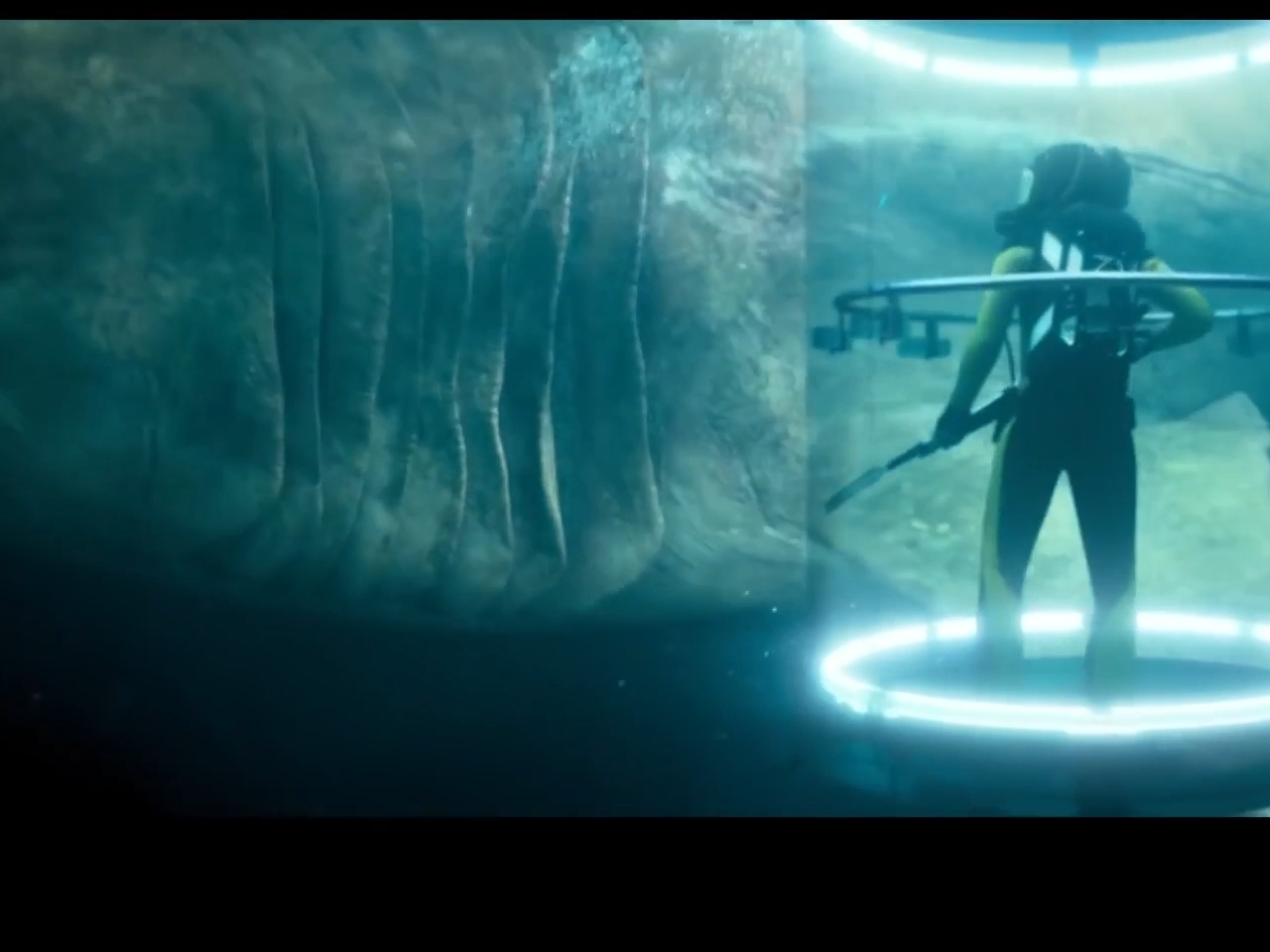
Warner Bros. Home Entertainment
Beyond its size, the shark is also not anatomically correct. Sharks have "between five and seven gill slits," said Webber-Schultz
"There's, like, eight gill slits on this thing, and it drives me bonkers," she said.
Sharks don't tend to pull their victims down into the water
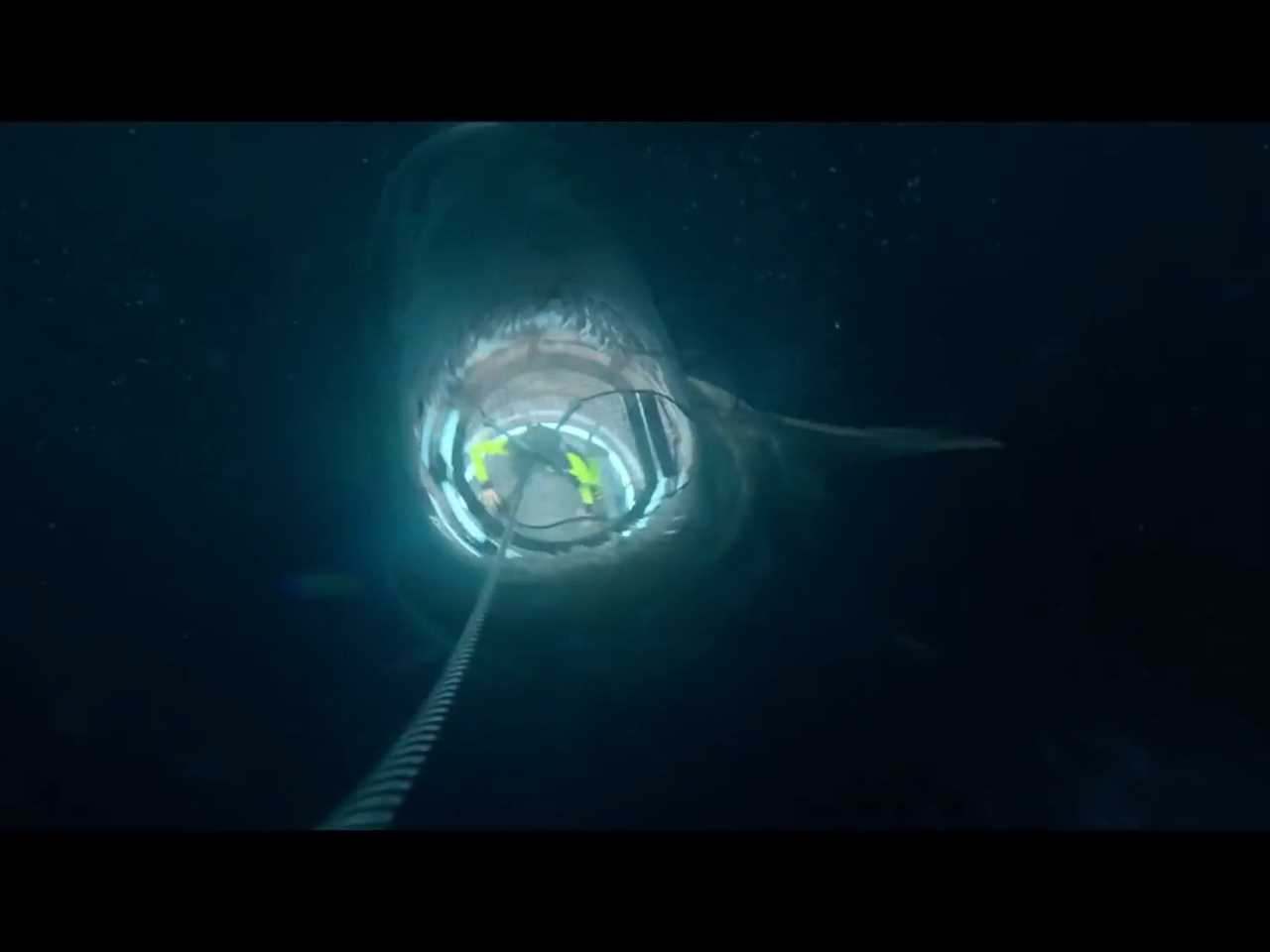
Warner Bros. Home Entertainment
"The Meg" also shows the giant prehistoric shark grabbing onto and dragging down an unrealistic glass shark cage. Although it's impossible to say what sharks would have done back then, looking at today's animals, it's very unlikely.
"Sharks are not that crazy about dragging their prey along to eat it. They will typically take a big bite and shake their head to create this gouging motion to get a chunk off and then swallow it," said Webber-Schultz.
You can watch Insider's full video with Webber-Schultz here:
Read More
By: [email protected] (Marianne Guenot,Margaret Guzman)
Title: 9 things about sharks you saw in movies that are actually wrong, according to an expert
Sourced From: www.businessinsider.com/10-shark-facts-movies-got-wrong-expert-finding-nemo-jaws-2023-1
Published Date: Thu, 12 Jan 2023 11:07:36 +0000
.png)





